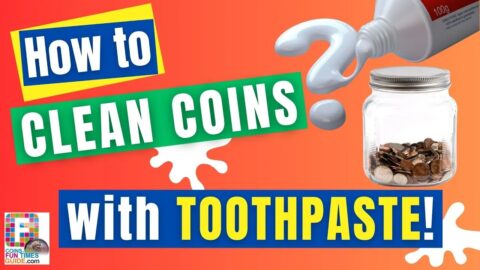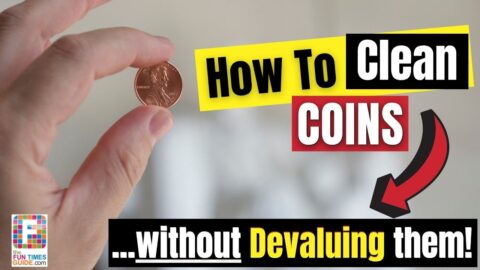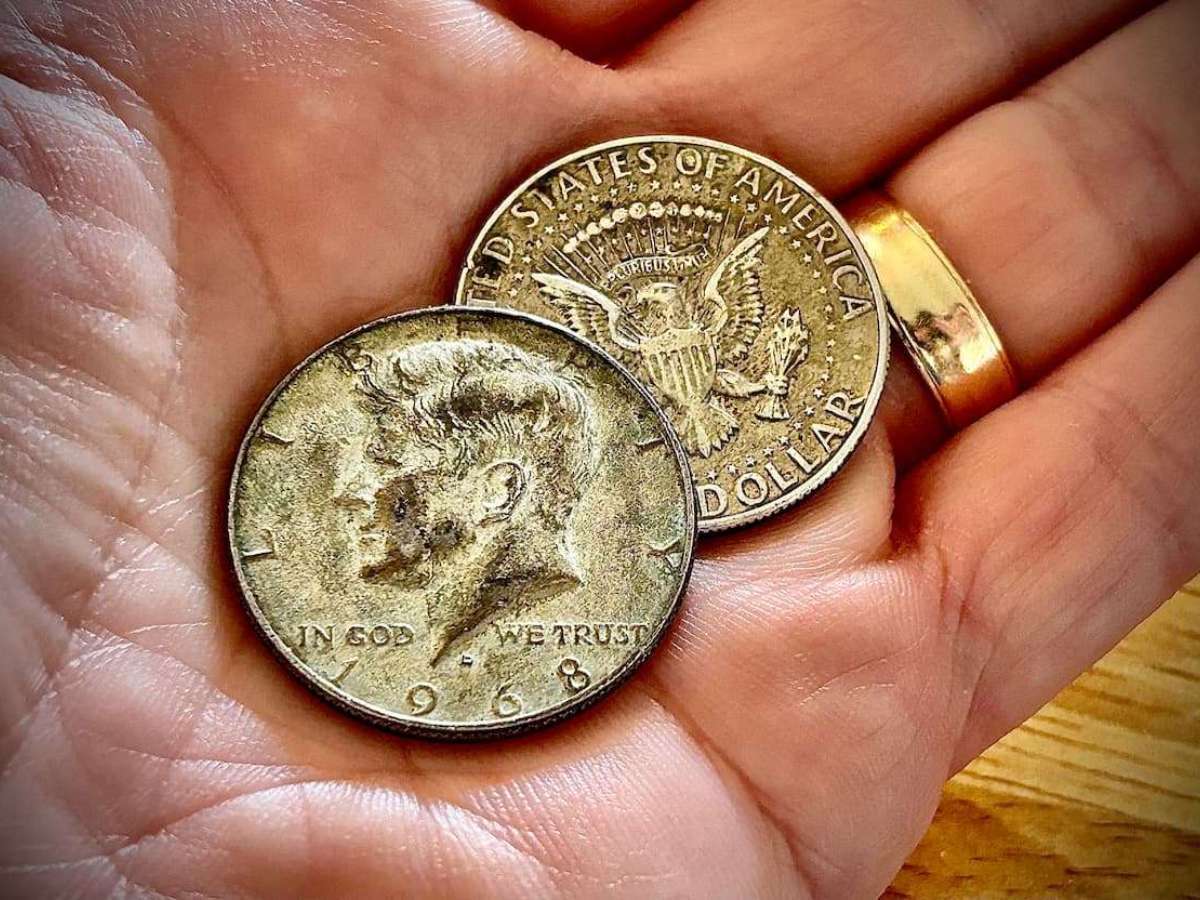Before you CLEAN COINS with baking soda & vinegar, find out how well BAKING SODA and VINEGAR work together to clean coins!
How To Clean Coins With Vinegar And Baking Soda – Curious if baking soda and vinegar works on cleaning pennies, nickels, and quarters? Exactly how do you clean old coins with vinegar and baking soda? See in real-time how well this classic method of cleaning coins with baking soda AND vinegar works on some old coins.
WARNING: all DIY methods of coin cleaning will damage the coins! This video is for demonstration purposes only on coins that are only worth face value. If you’re thinking of cleaning coins with Baking Soda and Vinegar… you’ll want to watch this video first!
============================
TRANSCRIPT:
Hi, this is Josh from The Fun Times Guide and I’m gonna talk a bit about cleaning coins. And most importantly, answering a question that a lot of folks ask me. And that is how well does baking soda clean coins.
Before I answer that question by showing you through the demonstration of these very cheap coins that I have here — it’s basically they’re just worth face value. A couple of pennies. Got a nickel here for you. And a couple quarters show you how well works on different kinds of coins.
I don’t advise cleaning coins at all — because A) it ruins the value of the coins and B) it will irreversibly damage the coins and thus like them undesirable for the typical collector to want to collect. But because people ask about this all the time and I do want to share with you how this method works and how well (I guess you could say) it works… I thought I’d take a minute and demonstrate for you right here.
So what I’ve got is a cup full (or more like half full or so) with vinegar. And I have some baking soda right here. And what I’m gonna do is just drop these coins into the vinegar. This will help to loosen some of the agents that are on the coin that gave it the color. You know, the patina. And how long you leave it in there is up to you. The longer you leave the coins in the vinegar the better — because that will give the vinegar more time to loosen the the surface agents and such and the patina (the tarnish, as some would call it) on the coin.
Now, for this purpose here, I’ll leave them just for a few seconds. Let them soak, you know soak in there and get that vinegar all around the coins on the inscriptions and the design and the edge reeding for the Washington quarters and make sure that they are really well immersed in the vinegar. Okay, let’s pretend an hour has passed, and we’ll take these coins out of the vinegar by just dumping the vinegar out into my sink right here. We will not want to dump the coins down the drain that would be very bad for this purpose. Okay, that’s fair enough. Alright, we’ll remove these coins from the cup without dumping too much vinegar on the counter. There we go. All 5 coins. Let’s go ahead and start scrubbing the surface of these coins. I’m gonna start with this very very dark 1967 Lincoln cent. Again, worth maybe 2 cents for its copper value. I’m gonna just aggressively scrub this coin with baking soda. And you’ll see, even with this very very short demonstration, we will be able to remove a lot of this surface tarnish through aggressively rubbing that baking soda into this coin.
And yep, it’s already starting to lighten up in color a little more vinegar (or rather baking soda) will help to take some of that off. Baking soda, as you know, is a very abrasive agent. And you can see that tarnish, if you will, coming off in the residual baking soda on my fingers. And yep, now the high points are getting lighter take a little more scrubbing to get that — get the fields or the flat surfaces of the coin — you know lighter in color. But this definitely works. I mean if you want to clean a coin, and you’re looking to scrub your old dark dingy pennies to make them clean, this is gonna work. Again, the longer and more aggressively you scrub the coin with baking soda, the better (if better means that you want a lighter coin). And yeah, I mean it’s definitely working the high points like in his cheekbone, and beard, the rim, the date, the Liberty, the motto In God We Trust are all lighter in color. You can tell that a lot of that color is coming off on my fingers.
So yeah, it works pretty well. Again, you know the longer the better when it comes to scrubbing. Now, most times these baking soda vinegar experiments work — are shown rather — with copper coins like these pennies here. But people ask, ‘Does it work well on nickel coins?’ Which, of course, as you might know… the so-called silver coins over the last 50 years or so are actually made from a copper-nickel clad composition. So they’re not really made from silver. But people call them silver coins because a lot of them were brought up when these coins were being made from silver. And again, they look kind of like silver coins — if you’re not really aware of what they’re made from.
So let’s go ahead and try some baking soda on this kind of green color nickel. I don’t know what happened to it — some kind of environmental damage. Maybe some sulfur or whatever. Let’s just start scrubbing away. Wow, this works really really well on this nickel. It’s already removing a lot of that yellow tinge and look at that — that just came clean in a matter of seconds! So definitely, baking soda is working on this (or vinegar and baking soda) are working on this nickel to rapid effect. And as always, when it comes to cleaning coins — if it’s something you want to do — the more you scrub, the more you clean, the better it will look in the eyes of the cleaning collector. Yep, that is definitely a… that’s a clean nickel!
Let’s try the Washington quarters. See this one here is a State Quarter. A South Carolina quarter. You know, it’s not too bad, but it does have some 20 years or so of surface tarnish. So let’s try some baking soda on this see how well that works here. And let’s get scrubbing. Yep! Look at that. Just a few swipes of the baking soda laden thumb and it’s already coming clean. So what you want to do when you’re done cleaning your coins is rinse them off under cold running water. Get the baking soda, vinegar, whatever agent you’re using off the coins. And you want to pat dry the coin with a soft towel when you’re done.
So there you have it. Maybe not perfect results, but definitely effective results. Baking soda and vinegar does work well. I probably should have left the pennies in a little longer (especially this guy here) longer in the vinegar. That would have really loosened up a lot of that dark coloration — that patina on there. But again, making a short video, I can’t really do that. I could have of course obviously had a time-lapse video, but I wanted to do it real time. So you at least can see how this works over the course of a few minutes. Again folks, I wouldn’t wouldn’t recommend cleaning coins. It damages them. These coins are technically damaged coins and would not be very desirable in the eyes of the average collector. But at least you see how well this works. So again, Josh with The Fun Times Guide. Thanks for watching. And happy collecting!














